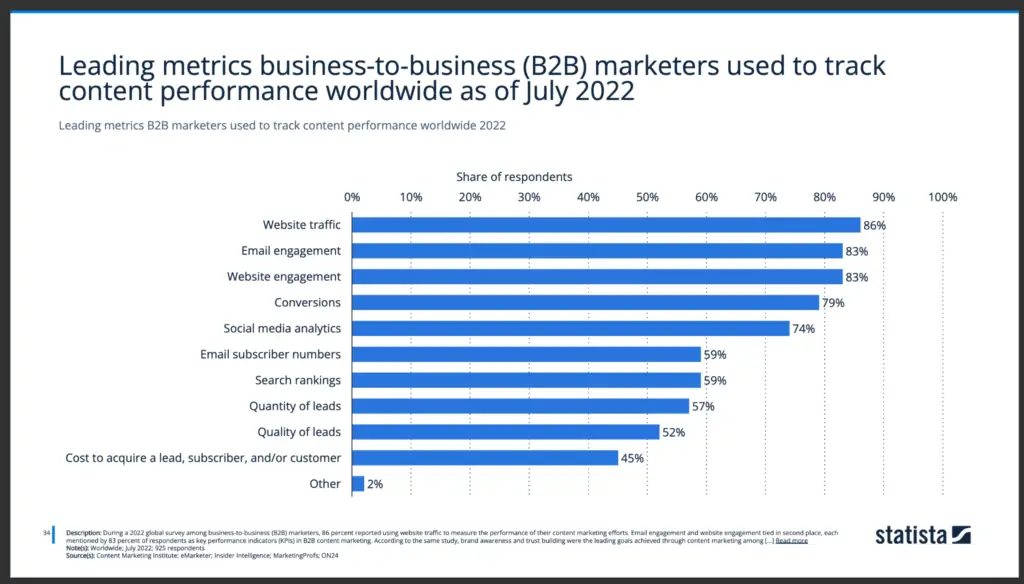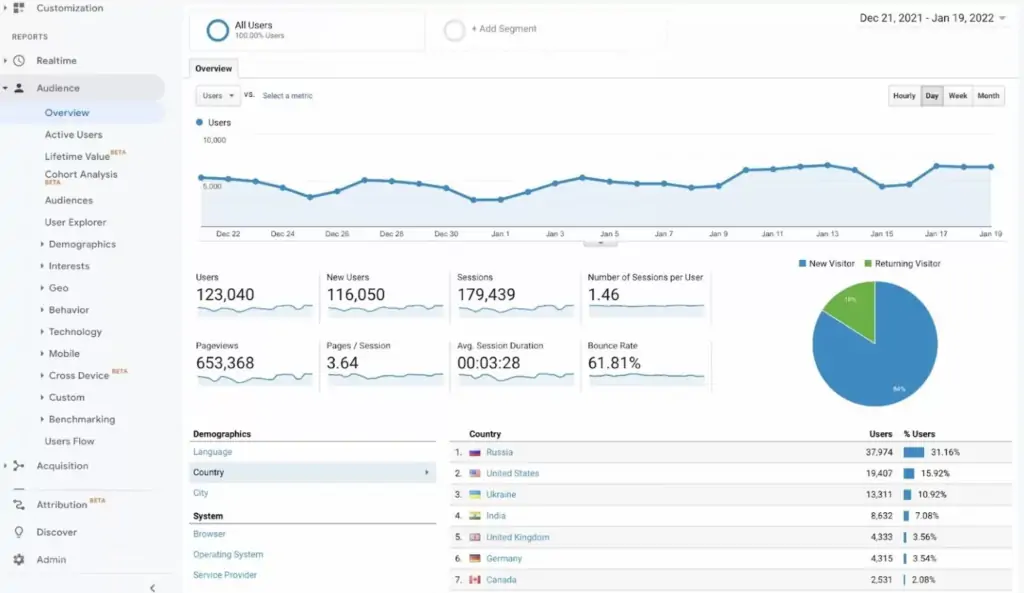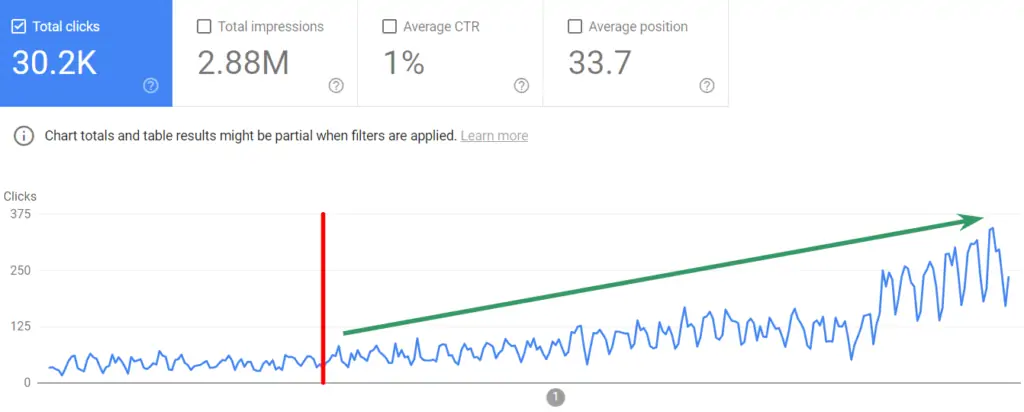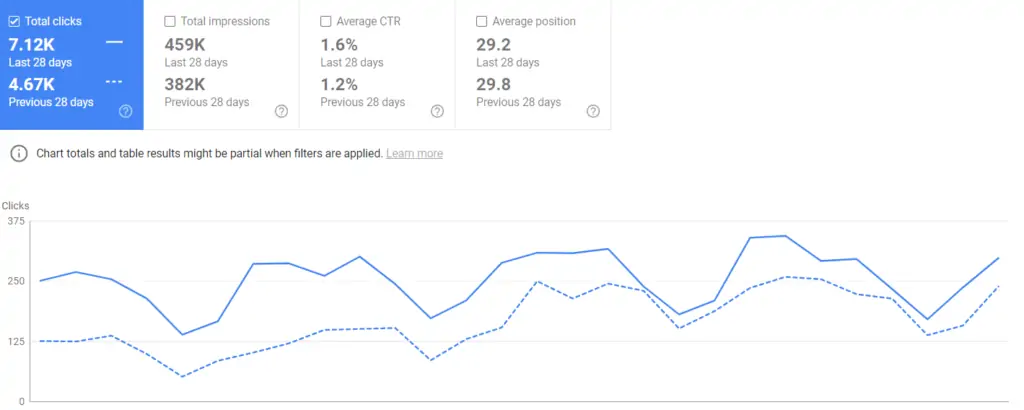
Content Marketing: Tips and Successful Cases

In this article, we will review the basic concepts of content marketing, talk about the stages of creating a content strategy, and provide some useful content marketing tips for creating and promoting content. In addition, we will share with you successful content marketing cases.
Read on to learn more about content marketing and how it can help your business to grow.
What is Content Marketing: Advantages and Disadvantages of Content Marketing
Content marketing is a long-term marketing strategy that aims to create and distribute content to attract clients, generate leads, make sales, etc. It is an effective tool for increasing brand awareness, attracting new customers, and strengthening relationships with existing clients.
Advantages of content marketing
- High-quality content helps companies promote their products and services and increase brand awareness. If you operate in a B2B sector, you can hire a B2B content writing agency to create compelling and informative copy relevant to your industry.
- Content marketing can help companies generate leads by providing valuable information related to the company’s products or services that may interest your clients.
- Content marketing can strengthen relationships with existing clients by helping them resolve their problems.
- Content marketing can help companies improve their SEO by delivering pages on their website with high-quality content that potential clients are looking for.
- Content marketing can be an effective way to attract clients without spending much money on advertising.
Disadvantages of content marketing
- Creating quality content takes time and effort. Companies need a team or resources to create and promote content that will be interesting and valuable to their target audience.
- There are no guaranteed results. Content marketing is a long-term strategy that may take some time to unwind. Companies should be prepared to invest time and effort in content marketing and not expect immediate results.
- There is a large number of indicators to track the outcomes. Measuring the effectiveness of content marketing can be tricky. Therefore, companies should use a variety of metrics to track the success of their content marketing strategy. The choice of metrics you will track depends on your specific goals of the content marketing campaign. For example, if your goal is to increase your product awareness, you will use metrics such as traffic, page visits, time on site, etc.
However, understanding the essence of content marketing and its strengths and weaknesses is not enough to build an effective content marketing strategy, so we have prepared a step-by-step plan for creating a strategy that will work, whether you use content marketing services or decide to develop it on your own.
Stage 1. Setting Goals
The first step in creating a content marketing strategy is to set goals:
- What do you want to achieve with the content?
- What is the goal of content marketing for your business?
- Do you want to increase brand awareness, attract new clients, or increase sales?
To make setting goals easy, we have found statistics for you on the main goals that marketers set for content marketing in 2022:
- create/increase brand awareness;
- generate sales;
- create demand and generate leads;
- building brand trust, etc.

Stage 2. Creating a Customer Profile
To move forward, you must clearly understand your target audience. Otherwise, you will not be able to create effective content. Therefore, at this stage, you need to collect as much information as possible about your potential clients. What are they looking for? What are their needs and interests? What channels do they use?
Here are some ways to gather information about your target audience:
- prepare a survey or focus group;
- analyze your client base;
- analyze data from social media;
- examine data from a search engine.
Note! If you have a sales department, you can always interview sales managers. They constantly communicate with your potential clients and will be able to tell you who contacts them, what requests they have, what questions they ask most often, and what audience is best to focus on at the moment. Businesses often underestimate the sales team’s potential, even though they can be an invaluable source of information about your clients.
You can start analyzing your target audience when you have collected enough information. Try answering the following questions:
- Who is your target audience?
- What are their needs and interests?
- What channels do they use?
- What are their pain points?
- What are their goals and dreams?
Answering these questions will help you understand your target audience and create content that will be useful and interesting to them.
Stage 3. Competitor Analysis
This is an important step in creating a content marketing strategy that will help you understand what your competitors are doing and how you can stand out in your niche.
Here are some ways to analyze your competitors:
- Analyze their content. What type of content do they create? How often do they post?
- Analyze their content distribution channels. How do they promote their content?
- Analyze their results. What content is performing best?
Stage 4. Selecting Content Distribution Channels
The fourth step of creating a content marketing strategy is choosing content distribution channels. At this stage, you need to determine where to post your content to make it available to your target audience. You can use social media, email, blogs, a company website, webinars, videos, etc.
Here are some tips for choosing content distribution channels:
- Consider your target audience. Where do they spend their time? What channels do they use?
- Consider your goals. Which channels will help you achieve your goals?
- Consider your budget. What channels are available to you?
Selecting content distribution channels that match your goals and target audience is important.
Stage 5. KPIs and Metrics to Track
The next step is to select key performance indicators (KPIs). KPIs are the metrics you will use to measure the success of your content marketing strategy. Choosing the right KPIs will help you understand whether you are achieving your goals.
When choosing KPIs, consider your goals, target audience, and content distribution channels. For example, if your goal is to attract new clients, you can choose KPIs such as the number of new email subscribers, leads, or sales.
To make your choice of KPIs easier, we have added the top KPIs that marketers set for content marketing in 2022:
- website traffic;
- email engagement;
- website engagement;
- conversions;
- social media analytics (reach, likes, comments, etc.).

Stage 6. Content Plan and Content Generation
Now that you know your goals, target audience, content distribution channels, and KPIs, you can develop a content plan. A content plan is a document that defines the types of content you will create, publication frequency, distribution channels, and KPIs. It will help you stay on track and ensure consistency in your content marketing efforts.
Stage 7. Analyzing Results
This is the last but not least step in creating a content marketing strategy. At this stage, you track your results to see if you are achieving your goals. Using the data, you can make the necessary changes to your content marketing strategy to achieve better results.
Cases of Successful Content Marketing
In this section, we will analyze a few examples of successful content marketing from different industries. These case studies will help you understand how companies use content marketing to achieve different goals and how it can help you reach your business goals.
Increasing the deals by 1,200% via content marketing
CONTOUR HEATING PRODUCTS LIMITED, a company specializing in heating solutions, faced three key challenges:
- stagnant organic traffic to the website;
- most visitors were from paid advertising;
- issues in product presentation to those who make purchase decisions.
To solve these problems, the company:
- Identified an opportunity to apply content marketing techniques to create a gap between Contour and the rest of the market and position Contour as a thought leader in the sector.
- Conducted detailed keyword research and identified additional phrases to optimize the website content.
- Found many new keywords that could increase traffic and attract a new audience segment.
- Developed a content plan strategically focused on underperforming product lines and market sectors, including creating two weekly blog posts.
- Supported the strategy for content marketing with technical and on-page SEO to ensure that key product and service pages rank well on Google.
- Integrated the website with HubSpot to improve lead analytics.
As a result, the company achieved a 2,000% increase in organic traffic, a 1,200% increase in the number of transactions, and over £2,000,000 in revenue.
Increased website traffic to 120,000 per day
The management of trendHERO, a service aimed at finding and verifying bloggers, decided to work on brand awareness and increase the number of website visitors. They decided to launch a large-scale content marketing campaign. They selected 400 thematic sites to implement it and agreed to publish articles with 50 sites. The quality of the articles was extremely high, so trendHERO received a lot of citations and reposts on social media.
As of January 2022, the trendHERO website received an average of 120,000 visitors a day.

Increased keywords in the TOP 10 search results by +1,317
Our client, the British company Hoxton Mix, set us the task of increasing the website visibility in Google search results in the UK.
Initially, it seemed strange to us that the website already had 200+ blog articles, but its positions and organic traffic were quite low. We conducted a detailed analysis of the existing content and found strong competition (cannibalization) between articles. The website began to grow rapidly after solving this problem.

Along with eliminating duplicate pages, we immersed ourselves in our client’s field, studied their target audience in more detail, and began to create a content plan for posting new articles. The content we created fully met the target audience’s needs, and the blog articles began to generate major conversions.

Yet, we do not stop posting new blog articles. To keep them relevant and interesting for readers, we regularly update the content plan by adding new topics, which leads to a steady increase in organic traffic.

You can read more about this case study and how we implemented the strategy at https://livepage.ua/cases/hoxtonmix-case-study.html, and we also invite you to read a recent testimonial from Chris Sees, co-founder of The Hoxton Mix.
Final Thoughts
Content marketing is an effective tool for business growth in any industry. It helps companies to increase their visibility in search results, improve the number of website visits, attract new clients, and raise brand awareness. But to succeed in content marketing, it is essential to create and test strategies and generate relevant content that meets the needs of the target audience.
At this point, you should already have an idea of whether you require content marketing and how it can benefit your company. Following the steps described in this article, you can develop an effective content marketing strategy for your business and reach the heart and soul of your target audience.
If you are unsure whether a content marketing strategy will be effective for your business, you can always contact the Livepage team. We will analyze your business and help you formulate a strategy to effectively meet your business objectives and promote your company. In our work, we use the Pareto principle, which states that 20% of the effort yields 80% of the result, so we always try to choose the minimum number of tasks that deliver the greatest result on the path to your goal.



















